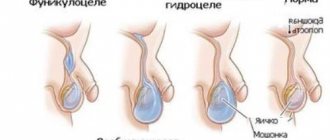For the human body to function properly, the coordinated work and interaction of all its systems is necessary. There are many components involved in the life support process. Destabilization of the quantity of one of them threatens the development of serious illnesses. A lack of vitamin D is especially dangerous. The second name of the component is calciferol. It contains several active provitamins: ergocalciferol and cholecalciferol - D2 and D3, respectively. The human body is able to synthesize the latter on its own under the influence of sunlight, while the former enters cells with food. Vitamin D deficiency can lead to serious disorders of life support systems and pathologies of internal organs.
Why is there a lack of vitamin D in the body?
Many scientists classify calciferol as a hormone, due to its participation in cell reproduction and normalization of metabolic processes. However, the main function of the vitamin is to regulate the processing of calcium and phosphorus in the small intestine. The element directly affects the human body, namely:
- strengthens the immune system;
- participates in the production of pancreatic insulin for the correct functioning of the gastrointestinal tract;
- suppresses the growth of tumor cells;
- increases libido, stimulates reproductive function;
- involved in the endocrine system – regulates the activity of the endocrine glands;
- affects the nervous system, improving memory and attention;
- regulates blood clotting;
- responsible for normalizing blood pressure;
- improves the condition of skin, nails, hair.
Among the main causes of vitamin D deficiency are failures in self-synthesis or a disorder caused by poor diet. In addition, there are several other factors leading to deficiency:
- dark skin independently protects itself from an excess of calciferol, which is especially pronounced in residents of the southern regions;
- sunscreen lotions and creams destabilize synthesis;
- exposure to ultraviolet radiation is significantly reduced in a city where the air contains high levels of dust and harmful emissions;
- Living in countries with low solar activity also causes vitamin D deficiency;
- In older people, the skin no longer synthesizes calciferol as efficiently.
As mentioned above, poor nutrition has a significant effect on nutrient content:
- high content of the element occurs in meat, fish dishes, eggs, which vegetarians avoid, automatically putting them at risk;
- unbalanced and improperly structured diets lead to a lack of vitamins;
- Pregnancy and breastfeeding cause a double consumption of calciferol. In this case, only the mother can restore the vitamin; the baby receives the element through milk or in utero - nothing else.
There are other reasons for the shortage:
- excess weight and lack of physical activity;
- diseases of the gallbladder, liver or kidneys;
- inflammatory processes of the small intestine;
- drug treatment that reduces stomach acidity.
Excess vitamin D is just as dangerous as its deficiency. In this case, weakness, fever, high blood pressure, slow pulse, development of osteoporosis, muscle and joint pain, constipation, diarrhea, nausea, general weakness, etc. are observed. Elevated levels of calciferol in the blood are caused by:
- drug overdose;
- simultaneous intake of synthetic substitutes, fatty fish and seafood into the stomach;
- ultraviolet burns, radiation.
If you notice in yourself or your loved ones a disturbance in the gastrointestinal tract, convulsions, pain in muscles or joints, a feeling of constant thirst, neurological abnormalities, arterial hypertension, most likely the cause is an overdose of vitamin D.
Treatment
Vitamin deficiency is eliminated by prescribing pharmaceutical drugs, which include vitamin D3 (colecalciferol), Aquadetrim, Vigantol. The dose of one drop is 500 IU (international units). The duration of treatment and dosage depend on the level of vitamin D supply in the body, identified during diagnosis.
After a course of therapy prescribed on an individual basis, tests should be taken. In some cases, lifelong use of the drug is prescribed to maintain the required level of the substance in the body. There is no single scheme; therapy is based solely on examination data.
Patients should not take vitamins uncontrollably - this is just as dangerous as self-prescribing medications. Taking active forms of vitamin D (calcitriol, alfacalcidol) can cause an increase in calcium in the urine to a critical level. If there is a need to prescribe calcitriol, treatment is carried out under the strict supervision of a physician. Therapy is prescribed for extremely low levels of calcium in the blood, with a high risk of developing vitamin D deficiency.
It has been established that an acute toxic condition while taking the drug is caused by doses exceeding 10,000 IU per day. Chronic toxic poisoning occurs at a dosage above 4 thousand IU of the active form per day for three months.
Main symptoms
Calciferol deficiency can be identified based on the following symptoms:
- Reduced processing of calcium, magnesium and phosphorus leads to the formation of cramps, muscle pain, and aching bones. The intensity of manifestations depends on the individual characteristics of the organism.
- Due to impaired calcium metabolism in the body, bones become more brittle and brittle, which causes frequent fractures.
- Decreased immunity creates susceptibility to viral infections leading to complications. The respiratory tract is especially vulnerable, damage to which can lead to bronchitis and pneumonia.
- The human body can accumulate sodium salts, the excess of which increases blood pressure. Calciferol actively counteracts this and its deficiency threatens arterial hypertension.
- With a deficiency of the vitamin, belching, bloating, diarrhea and other disruptions in the gastrointestinal tract are observed.
- The work of the sweat glands in the back of the head increases.
- Body weight increases.
- A lack of vitamin affects healthy sleep; the patient experiences insomnia at night and, as a result, lethargy and low performance during the day.
- Nervous system disorders are possible, mood swings and depression are observed. This occurs due to a disruption in the production of serotonin.
- Malfunctions of the cardiovascular system: rapid heartbeat, pain, changes in rhythm.
- Symptoms also include hair loss and bleeding gums.
A general blood test for vitamin D deficiency will show anemia, low levels of phosphorus, calcium and magnesium, and a high alkaline content.
Vitamin D deficiency
At the initial stage, it is almost impossible to notice a vitamin D deficiency. At this stage, there is slight fatigue and malaise. Then problems with immunity appear. A person often suffers from colds, the condition of the skin and teeth suffers.
Severe calciferol deficiency in adults is characterized by the following symptoms:
- Increased sweating, mainly in the occipital region.
- Decreased appetite and body weight.
- Poor posture, appearance of stoop.
- Regular feeling of fatigue.
- Bad dream.
- Severe pain in the joints.
- Dental problems.
If hypovitaminosis or calciferol deficiency has a protracted course, more severe symptoms may occur in adults. These are intestinal disorders, heart pathologies, impaired visual acuity and even oncology.
Vitamin D deficiency is more severe in children than in adults. With prolonged deficiency, rickets is diagnosed, which is characterized by abnormal development of the bone apparatus. Lack of calciferol is accompanied by signs:
- Delayed teething.
- Problems with closing the fontanelles.
- Increased sweating.
- Poor nutrition and sleep disturbances.
- Anxiety, tearfulness and irritability.
If measures to replenish the substance are not taken in a timely manner, a pronounced anomaly of the bones and skeleton as a whole occurs.
In adults
For many years it was believed that only children needed vitamin D for the correct functioning of all body systems. Studies have shown that under its influence, calcium enters the bones, promoting their proper formation and development, excluding the appearance of rickets. As for the mature age group, it was believed that there could be no deficiency of the element in men and women over 18 years of age, since the body is sufficiently exposed to sunlight. Further research in this area proved the opposite. In adults, the micronutrient controls cell division, has an anti-inflammatory effect, stimulates the activity of the immune system and promotes the production of antibacterial particles in the body, ensures optimal functioning of the nervous system, and causes the production of “antidepressive” mediators - dopamine and serotonin. When there is a shortage of it, the following occurs:
- brittle bones;
- muscle weakness, periodic cramps;
- frequent colds;
- lack of mood;
- irritability and depression;
- loose teeth, frequent caries;
- loss of appetite.
Daily requirement
The daily amount of vitamin D that a person should consume depends on his age. Today the recommended indicators are:
| Age group | Daily dose, IU | Maximum allowed quantity (thousands), IU |
| Child up to 6 months | 400 | 1 |
| Baby from 7 months to one year | 400 | 1,5 |
| Children 1 – 8 years old | 600 | 2,5 — 3 |
| Teenagers 9 - 17 years old | 600 | 4 |
| Adults from 18 to 70 years old | 600 | 4 |
| Elderly over 71 years old | 800 | 4 |
| Pregnancy and breastfeeding | 800 | 4 |
The maximum daily dose of vitamin D that can be safely taken for preventive purposes (without a preliminary blood test) is considered to be 4 thousand IU.
Without the supervision of a specialized specialist, it is not recommended to take calciferol in an amount of 10 thousand IU for more than six months.
According to the recommendations of domestic endocrinologists, the daily intake of vitamin D in food consumed for a healthy person aged 18 to 50 years should be at least 800 IU, for people in the older age group - about 1 thousand IU, for expectant and nursing mothers - up to 1, 2 thousand IU.
Consequences of shortage
Vitamin D deficiency is a global health problem today, affecting more than 1 billion people worldwide. Its deficiency may be the result of insufficient exposure to ultraviolet radiation, exclusion of the element from the daily diet, accelerated catabolism due to the prescription of medications, or diseases affecting its absorption and metabolism. Vitamin D deficiency in children leads to rickets, in adults – to softening of bones and other other changes.
Calciferol promotes the development of demineralization of bone tissue. In younger age groups, bones soften and become deformed over time. This leads to slower growth, enlarged epiphyses of long bones and deformation of the limbs. Adults with osteomalacia experience constant discomfort, brittleness and pain in the bones, joints and muscles; gait disturbance and deformation of the spine and skull may be observed. Often such manifestations are confused with diagnoses of “fibromyalgia”, “chronic fatigue syndrome” or “arthritis” and the correct treatment is not prescribed in a timely manner. Vitamin receptors are also present in skeletal muscles, so deficiency causes muscle weakness in the legs and chest area, discomfort in the lumbar region, and increases the risk of falls and fractures. The latter are relevant for the elderly age category.
Research by doctors and scientists also shows the influence of suboptimal levels of vitamin D on the development of vascular and heart diseases.
Diseases that arise from a lack of vitamin D are varied - from chronic infections and colds to visual impairment, respiratory failure, coronary heart disease, tooth loss and decay. In children, hypovitaminosis D can manifest itself in the form of rickets, a disease that primarily affects the bone and nervous systems.
University
→ Home → University → University in the media → In autumn-winter, 80% of Belarusians have vitamin D deficiency. An endocrinologist on how to cope with its deficiency
When you read about vitamin D, it seems that life is not life without it. It turns out that it is really responsible for many things in the human body. Endocrinologist, Doctor of Medical Sciences, Professor, Head of the Department of Endocrinology at BSMU Tatyana Mokhort spoke about why vitamin D is needed, how to cope with its deficiency and how to get tested correctly — Many people around me talk about how important it is that everything is in order with vitamin D levels. Why is it even needed?
— Vitamin D is a rather complex substance that has many receptors in different organs and tissues. That is why it is so important for the body. Historically, vitamin D deficiency has been associated with rickets. This is a condition when children have soft bones and crooked legs, the fontanelle (non-ossified part of the cranial vault. - Note TUT.BY) heals late.
The more time passes, the more news appears about vitamin D. It turns out that it is needed for the immune system to work well, so that the skeleton does not become brittle, and osteoporosis does not develop in adulthood. It is needed for muscle strength, for good cognitive function of the brain, to reduce cardiovascular risks, so that various organs and tissues do not calcify, that is, so that dense plaques do not appear in them.
Today we know much more about vitamin D than 20-30 years ago.
Endocrinologist, Doctor of Medical Sciences, Professor, Head of the Department of Endocrinology of BSMU Tatyana Mokhort
Interest in vitamin D increased when we learned to determine its content in the blood. Previously, they took a urine test and, based on the level of calcium, they could indirectly judge the body’s supply of vitamin D. Now it can be determined by a blood test, this is a direct determination of vitamin D, and this can be done much more accurately than by a urine test.
Vitamin D is also called hormone D, since it is secreted into the blood and has systemic effects, which probably explains the interest of endocrinologists in this substance.
— Do Belarusians suffer from a lack of vitamin D?
- Yes. Professor Emma Vladimirovna Rudenko and a group of her followers conducted a study in which they assessed the level of vitamin D in Belarusians of different ages, different genders at different times of the year. The result was expected: the proportion of people with vitamin D deficiency reaches 80% in the autumn-winter period.
Belarus is located far from the equator. This means that the sun’s rays reach us tangentially and we don’t have a very long period of the year with active sun. There are many cloudy days in our country, the length of the day quickly changes towards an increase in the non-light part of it. That is, we have all the prerequisites for vitamin D deficiency.
— Can a person independently determine that he has a vitamin D deficiency?
— Signs may include dry and brittle nails, dry skin and brittle hair, muscle weakness, fatigue, decreased immunity, progression of osteoporosis in older women.
But these are such nonspecific signs, especially today, when you and I very often come into contact with chemical products, that it is difficult to say whether hair is breaking because it is a deficiency of vitamin D, or because we regularly dye it.
While there are indirect signs of vitamin D deficiency, a reliable result can only be determined by a blood test.
—Who should be tested for vitamin D deficiency first?
— Those who are at risk of deficiency. These are middle-aged people who spend little time in the sun and like to wear closed clothes. One of the ways vitamin D is formed in the body is through its synthesis in the skin under the influence of sunlight.
It is also worth getting tested for people who have a very limited diet and do not consume foods containing vitamin D: sea fish, egg yolk, liver, butter... Most of this vitamin is found in fatty sea fish and cod liver. It is also important that people who have frequent diarrhea or underweight take the test.
— You said about middle-aged people. What age are we talking about?
— A progressive decrease in bone mineralization begins in women after menopause and due to estrogen deficiency, this is after 50 years.
By this age, you need to pay more attention to your health, and not expect that fate will send it. We must fight for health and, first of all, lead a healthy lifestyle. And it means not only eating a large amount of fruits and vegetables, but also a sufficient amount of sea fish in the diet, containing omega-3 fatty acids and vitamin D. It is important that the diet contains a sufficient, but not excessive amount of protein, that is, not only fish, but also meat. You need to eat cereals because they contain fiber.
At work, I often interact with overweight patients. Let me give you an example when one of the patients complained that she was eating right but not losing weight. I ask: what do you eat?
For breakfast I eat two pancakes.
- With what?
- Without anything.
What is a pancake? This is a flour that generally does not contain fiber.
“Then for lunch I have a piece of chicken breast with pineapple compote, because pineapple is a fat burner. But the compote is sweet,” she says.
Here are two meals - and absolute illiteracy. Instead of eating porridge with fiber for breakfast and a bowl of vegetables with chicken breast for lunch, a person eats pineapple and pancake.
Also, a healthy lifestyle implies mandatory physical activity. There is a good saying: take your bones for a walk. In relation to our problem, we must understand that when a person walks, moves, or engages in physical work, his muscles contract during movement, blood supply and bone trophism improve.
— It is important for women who are not worried about anything to pay attention to vitamin D after 50 years, but for men?
— Men can do it later, although a gradual decline in the level of male sex hormones begins at age 30.
— If a person is often sick, can we say that he does not have enough vitamin D in his body?
- Yes, potentially it could be. People who are chronically and long-term ill often have a vitamin D deficiency. We are talking about those who get sick, for example, with ARVI three to four times a year. There is evidence that vitamin D has a positive effect on the course of various inflammatory diseases, accelerating recovery.
— Can a lack of vitamin D cause depression and apathy towards life?
— Maybe, but everything cannot be reduced to one factor. If a person’s close relatives have died or there are troubles at work, then the question arises: what causes depression - vitamin D deficiency or these factors?
Large studies have evidence that vitamin D affects mood and perception of quality of life, but it cannot be said that this is the main factor in depressive moods. After all, even the length of daylight is very important for the psyche. From November to February the mood is worse than from March to October. And they associate this with daylight, and daylight means sun and vitamin D.
— To find out what your vitamin D level is, can you get tested without a doctor’s recommendation?
— I’m generally against self-medication, probably because I’m a doctor. I would like to believe that our doctors are competent, and if people turn to them, they give competent advice. And I am in favor of getting tested after consulting a doctor.
- Which doctor should I go to?
— You need to start with a general practitioner or therapist. He understands a little about everything, including vitamin D. But, of course, it can be a rheumatologist, an endocrinologist, and gynecologists now prescribe such tests; nephrologists, for their part, also study vitamin D very widely and deal with this in detail. When kidney function is impaired, inactive forms of vitamin D are not converted into active ones and it obviously becomes low in the body.
As an endocrinologist, I want to draw attention to one more aspect - hyperparathyroidism. Our body has parathyroid glands; they are located on the posterior surface of the thyroid gland and are responsible for phosphorus-calcium metabolism. And it is precisely vitamin D deficiency that causes disruption of their function, in particular an increase in the product of their work - parathyroid hormone. When there is not enough vitamin D, they try to force the body to work better.
Manifestations of excess production of this hormone lead to an increase in calcium levels and the appearance of very diverse symptoms. These may be bone fractures, urolithiasis, gastric ulcers, changes in the cardiovascular system.
A doctor of any specialty can start working on vitamin D, but if a deficiency has been identified, then this is the first step. Next you need to look at phosphorus-calcium metabolism and the level of parathyroid hormone in the body. This will help determine whether we are faced with a pure vitamin D deficiency, or whether it has already led to some chain of diseases.
— For the analysis to be honest, how to take it correctly?
- On an empty stomach. It is advisable not to take it in the summer on sunny days, when we walk with bare arms and legs. An honest test is one that you took in late fall, winter, or early spring.
— What is the normal level of vitamin D?
— Vitamin D deficiency is an indicator less than 25 ng/ml. Excess starts at 100 ng/ml. The target level is at least 20−30, optimal 40−65 ng/l. Excess is a contraindication for taking vitamin D, as is an increase in calcium levels in the blood.
— Is it possible to increase vitamin D levels only with the help of tablets?
— One of the options is insolation, that is, exposure to sunlight. Although in sunny Arab countries there is a high level of vitamin D deficiency. This is due to tradition - they wear clothes that cover almost the entire body from the sun and prying eyes.
But if you resort to insolation, it is important to know when to stop. After all, when you go to southern countries, you often begin to catch the sun’s rays as much as the sun in the sky. And harsh sun rays, which are abundant in the middle of the day, can contribute to the development of skin cancer.
Morning and evening rays are suitable for insolation. Everyone knows this, everyone says that they do this, but when I find myself in vacation spots, on the beach, I see that the bulk of people come there after 11 o’clock, when I’m already leaving. Everyone knows, everyone agrees, but they act differently.
You can also get vitamin D through diet. But, unfortunately, it is impossible to eat enough food to compensate for vitamin D deficiency every day. For example, you need to eat 200 grams of butter per day, 10 grams of cod liver. This is incredible. Most often, vitamin D deficiency is taken in drops and tablets.
— How to take vitamin D correctly?
— The doctor will determine the dosage depending on the level of vitamin D deficiency identified in the patient. A safe dose is 2,000 international units of vitamin D per day or four drops of vitamin D solution every day.
— For how long should it be taken like this?
— In the summer you can take breaks. But taking vitamin D is only indicated in case of deficiency, as it can be permanent.
— How often should you retest for vitamin D?
— If the level is normal, then it’s definitely not necessary more than once a year. And if a person has completed a course of treatment, then it is better to retake the test immediately.
Vitamin D deficiency is caused by lifestyle and place of residence. If you undergo treatment and then stop taking the drug, the deficiency could theoretically return.
— I read that vitamin D deficiency also affects the development of cancer...
— There are many studies and it has been proven that type 1 and type 2 diabetes mellitus develops less with an adequate supply of vitamin D, and there is less mortality, including from cancer. But there are no studies yet that say that correcting vitamin D levels will lead to such indicators.
— Even five years ago they didn’t talk about vitamin D as often as they do now...
— If you ask me whether it was easy five years ago to go and do a blood test for vitamin D in Belarus, then I will answer you that no. Now it's possible. This was led to by the development of science in the world as a whole and the arrival of new knowledge and technologies in Belarus.
I have been working in endocrinology for 40 years, before we could check the level of glucose in the blood, palpate the thyroid gland, do the absorption of radioactive iodine by the thyroid gland and conduct scintigraphy (a method when radioactive isotopes are injected into the body. - Note TUT.BY) - and that’s all. Everything else was based on the clinical picture (complaints and examination of the patient. - Note TUT.BY), because we did not have computed tomography, magnetic resonance imaging, hormonal testing, ultrasound...
But everything flows, everything develops. And today we have new diagnostic methods. In 1986, before the Chernobyl accident, we rarely tested thyroid hormones. And now, probably, almost everyone knows their thyroid hormone levels.
— What vitamins would you recommend paying attention to in the fall?
— I can’t say that in the fall you need to pay attention to vitamins, but not at other times of the year. I am for proper nutrition all the time. It's not very easy, but it's not true that it's expensive. White cabbage is cheap, and it contains a lot of vitamins. The diet just needs to be composed correctly.
When you talk to patients individually, none of them buy cola and hamburgers. I don’t know a single patient who would say, “I drink cola and eat hamburgers.” But where do they go then?
- I drink cola...
- You don’t drink everything alone!
We tend to embellish what we do and pretend that we are all good. In fact, we eat very, very wrong.
— How would you recommend eating?
— Let's start with the fact that during my youth, Thursday was fish day all over the country. And I am in favor of having a fish day. Secondly, you need to eat porridge, a lot of vegetables, meat, low-fat dairy products, kefir.
Notice I didn't say anything about fruit. Fruits contain a lot of sugar. Yes, this is also a healthy diet, but they should not be the basis of it. And our people love to eat a kilogram of grapes with pleasure in the fall. The same bananas are a very high-calorie product. But vegetables are all healthy.
But Belarusians, however, consider potatoes also a vegetable, and this is a root vegetable. A vegetable is something that grows on top of the garden bed, not inside. Carrots, beets, Jerusalem artichokes are root vegetables. They contain more carbohydrates than vegetables, but that doesn't mean you can't eat them. It is possible, but the question here is how often and how much. Author: Natalia Kostyukevich Photo: Daria Buryakina TUT.BY , September 12, 2018
Share
Summarize
To maintain the optimal amount of vitamin D in the body, children over one year old need to receive 600 IU per day, and adults – 800 IU. Those who are at risk are recommended to exercise daily, walk during the day (at least 20 minutes), a balanced diet, including foods that contain vitamin D. It is also necessary to maintain a normal weight and monitor the functioning of all body systems , paying special attention to the intestines, liver and kidneys. If osteoporosis is detected in your immediate family or hypovitaminosis D is diagnosed, consult a doctor immediately.
Multidisciplinary medical service means high-precision diagnostics, consultations with the best doctors, prompt and effective treatment of various diseases. Here you can undergo a full course of examination and receive help from highly qualified specialists. To make an appointment and for other questions, please call.
Date of publication: 09.24.2020 16:18:28
Interaction with other elements
Vitamin D (calciferol) has a complex structure, which is similar in structure to a hormone molecule. Therefore, in medical literature it is often called a prohormone.
Vitamin D: 25-OH D2 (25-hydroxyergocalciferol) and 25-OH D3 (25-hydroxycholecalciferol) SEPARATELY in Moscow from 5 days.
from 5710 ₽
Sign up
Vitamin B12 in Moscow from day 1
from 500 ₽
Sign up
25-OH Vitamin D total (25-hydroxycalciferol) in Moscow from day 1
from 990 ₽
Sign up
The substance actively interacts with other vitamins, minerals and medications.
Groups of substances and drugs that interact with vitamin D are presented in the table below.
| Effect | Substances |
| Concomitant use is recommended | Phosphorus, calcium, magnesium, vitamin K2, omega-3 fatty acids |
| Neutralizes side effects | B vitamins |
| Impair absorption | Vitamin E in high concentrations, iron, anti-tuberculosis drugs |
| Increased side effects | antacids containing magnesium, cardiac glycosides, thiazide diuretics (hypothiazide, furosemide) |
The remaining substances are neutral to calciferol.









